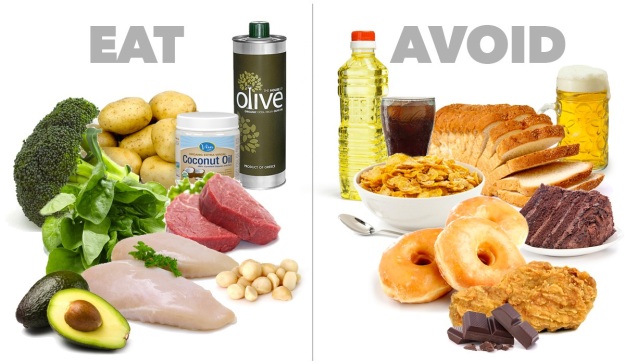Strength training is an important part of improving your overall fitness, and for women, it can mean much more. In addition to numerous health benefits, adding weights to your routine can become a form of personal development that builds strength in all areas of life.

1. Muscle increases metabolic rate and boosts your metabolism naturally.
The more muscle you have, the higher your resting metabolic rate. You read that correctly; by doing absolutely nothing, you can actually burn calories thanks to your mighty muscles. One pound of muscle uses about six calories a day to sustain itself, while one pound of fat burns just two calories daily. And after a session of resistance training, you’ll burn even more since your muscles all over your body are activated.
Want to burn even more calories? In a study from the journal Medicine and Science in Sports and Exercise, it was found that women who lifted 85 percent of their maximum load for eight reps than when they did more reps at a lower weight burned twice as many calories in the two hours after their workout.
By adding muscle through strength training (even just a little bit), your resting metabolic rate (i.e., the amount of calories you burn daily by just existing) increases. Weights temporarily lift your metabolic rate, thanks to a handy process called excessive post-exercise oxygen consumption (EPOC), which means your body continues to burn calories at a higher rate even when resting. That’s why, in a study at Penn State University in the US, dieters who lifted weights as well as doing cardio lost 6lb more fat than the group doing aerobic work alone. Athletes are calorie-burning machines even when they are not exercising.
MORE THAN JUST CALORIES:
2. Lifting weights strengthens muscle and bone, which helps reduce the risk of osteoporosis or brittle bone disease
Building muscle mass helps strengthen connective tissues, which increases bone density. By doing this, you’re reducing your risk for injury, and your chance of getting osteoporosis later in life which women are more at risk of than men.
Due to dropping levels of estrogen, postmenopausal women are prone to osteoporosis. Numerous studies show a positive relationship between resistance training and bone density. When bone feels the “pull” from the muscles, bone growth is stimulated. Not only can strength training offset bone loss, it can actually cause an increase in bone density in women who regularly lift weights.
The Centers for Disease Control (CDC) have also found that exercise, which build muscles (here’s how to start your own strength training routine), can actually help to improve balance, improve blood-sugar control, and improve sleep and mental health.
3. If weight loss is your goal, muscle is your mate.
Cardiovascular exercise WILL burn a higher percentage of stored fat but, as Liz says, “A muscular body is a more efficient body. For every additional pound of muscle you gain by lifting weights, your body burns around 50 extra calories every day.”
4. Shape without the bulk.
“If I lift weights, I’ll bulk up like Arnie“- The Truth: Due to their lower levels of testosterone, it is very difficult for women to develop large, bulky muscles. Instead of the bulk, most women tend to build a nice hourglass figure—curves we can be proud of!
On a moderate training plan, building up excessive bulk is impossible. Muscle growth is very dependent on testosterone and women tend to produce 10 times less than men, so you can’t build big bulging muscles naturally. Add to that bodybuilders spend pretty much all day, every day, lifting HEAVY weights and eating large amounts of protein every couple of hours to achieve that look. Unless you put in that kind of time and effort, you’re not going to turn into Popeye.

5. Elevate mood.
Women are twice as likely to develop clinical depression as men, yet two-thirds of these women do not do anything to combat these feelings. The release of norepinephrine, dopamine and serotonin during resistance training chemically helps exercisers acheive a feeling of well-being. Weight training also leads to an increase in energy, better sleep patterns, and a feeling of accomplishment and control.
6. Lifting weights also has a positive effect on insulin resistance – so your body can convert carbs into energy more efficiently. It raises your metabolic rate by as much as 15%, reduces blood pressure and improves your mood. These are factors that reduce your risk of diabetes, heart disease and some cancers.
7. Improve posture.
Combat a kyphotic (hunched over) posture by strengthening the backside of the body. Proper posture leads to injury prevention and better power transfer in athletics. And let’s face it, you just look better when you stand up straight (your mother was right!).
8. Move better for longer.
By strengthening muscles and improving bone density, women who spend time in the weight room are typically active for longer periods of time. Increased hip and leg strength aid in mobility and balance, and upper-body strength helps combat postural issues that can lead to back and shoulder injuries.
9. Become a better athlete.
Gone are the days when coaches worried that lifting weights would build bulky muscles that would weigh down athletes. Strength training can lead to better functional movement, explosive power, durability and, of course, greater overall strength.
The bottom line.
Let’s face it: As often as I spout out all of these benefits, I still hear 9 out of 10 women saying they want a better butt. What is the best way to achieve a better butt? Squats. Lunges. Strength training.



